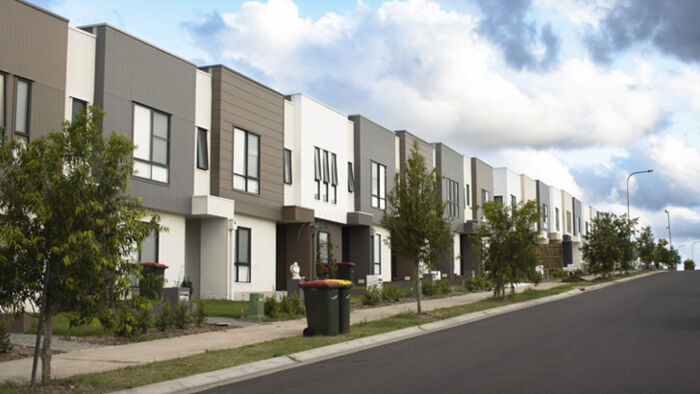Australia's big problem with affordable housing
By Nicola Field
Australians struggling to find an affordable rental could face a long wait.
Housing is a hot issue right now, with both renters and buyers left out in the cold thanks to high prices and low supply.
A proposed $10 billion Housing Australia Future Fund (HAFF) designed to boost the supply of low-cost rental homes formed a key part of the Albanese Government's 2022 election platform.
The idea is that the HAFF will generate sufficient returns (estimated at $500 million annually) to build 30,000 new social and affordable housing properties in the first five years.
It sounds good on paper. But a political stalemate is raising questions about whether the HAFF will get off the ground, let alone pay for desperately needed homes.
Here's a quick rundown of what's happening.
What is 'social' and 'affordable' housing?
The Australian Housing and Urban Research Institute (AHURI) defines 'social housing' as government-subsidised short and long term rental housing.
Unlike private rentals, social housing is allocated according to need, and it's mainly available to very low income earners, and people experiencing homelessness or family violence.
Rents are typically priced below market, often pegged at 25-30% of household income.
'Affordable' housing is pitched at those on low to moderate incomes, with rents that account for less than 30% of gross household income.
Why does Australia need social and affordable housing?
Comparison site Savvy reports that over 640,000 Australian households are either homeless or experiencing housing stress, defined as spending 38% to 60% of income on rent.
Unless action is taken, the situation is expected to worsen.
SGS Economics and Planning estimates that by 2051 over 300,000 Australians will be sleeping rough, and 1.1 million people will be low income earners battling to find a place to live.
Don't we already have public housing?
Yes, but nowhere near enough.
AHURI says Australia has around 350,000 social housing dwellings nationally. That works out to just 4.4% of all households, and demand far exceeds supply.
Already, 216,000 applicants are on a waiting list for public housing, and demand has increased almost three times as fast as our population growth.
As SGS points out, social and affordable housing doesn't just put a roof over people's heads. It provides accommodation for essential workers, delivers savings on health costs and reduces crime.
Yet, on an international scale, Australia isn't pulling its weight for affordable housing. In the Netherlands, over one-third of total housing stock is social housing. The figure for the UK is 17%.
So what's the problem with the Housing Australia Future Fund?
On June 17, Prime Minister Anthony Albanese announced $2 billion in funding - the so-called Social Housing Accelerator payment, for state/territory governments to increase their social housing stock.
However, this week saw the Greens block the HAFF bill in the Senate.
The Greens' view is that in addition to increasing social housing supply, Labor needs to freeze rent increases for two years, and cap future rent rises to 2%.
Greens leader Adam Bandt says, "Unlimited rent increases should be illegal. The pressure is now on the Prime Minister and the Labor Premiers to act on a rent freeze and limit rent increases."
The problem is that formal rent freezes and rent caps could discourage Australians from investing in rental properties.
The Real Estate Institute of Australia has jumped into the fray, calling on the Opposition to back the HAFF to "take the wind out of Adam Bandt's sails".
The upshot is that the HAFF is sitting in limbo, and it's a case of watch this space to see what happens when National Cabinet meets later this year - a delay that will be no consolation to the two in five (42%) tenants struggling to pay their rent.
Get stories like this in our newsletters.



